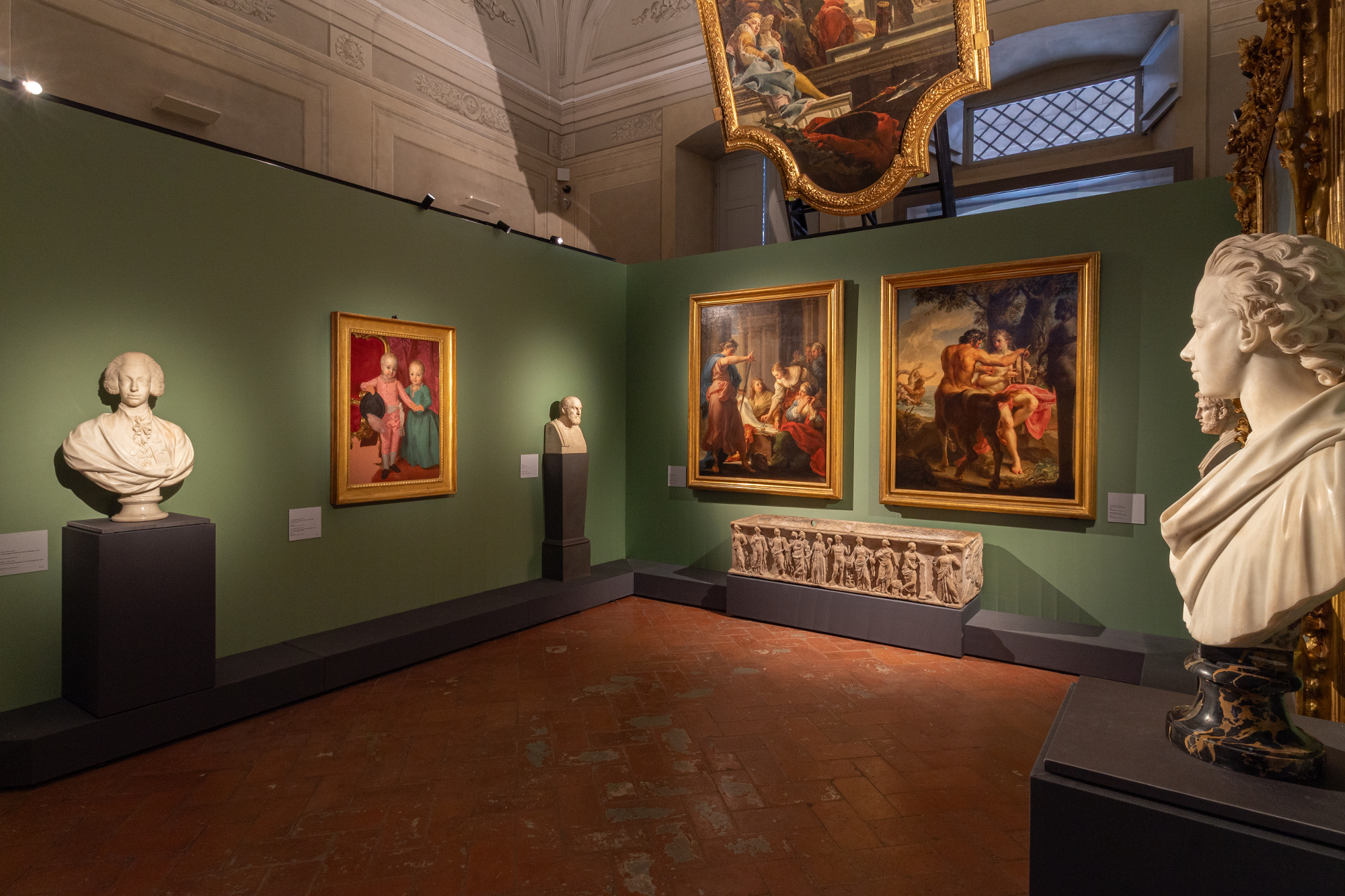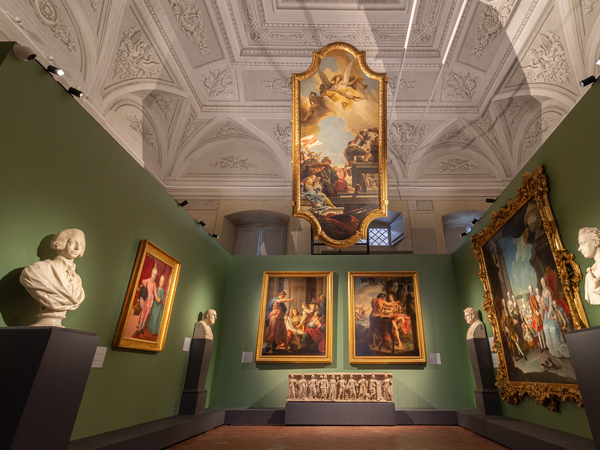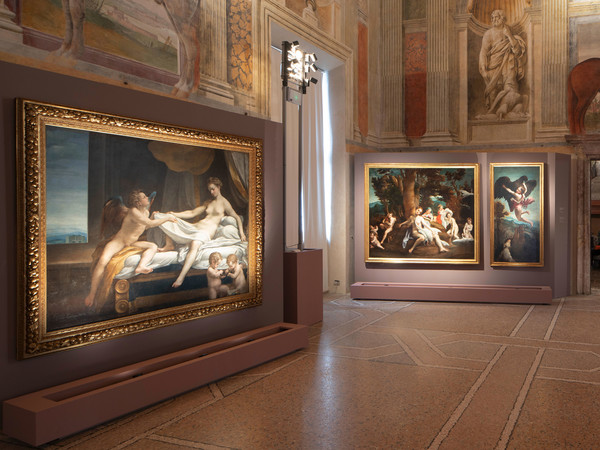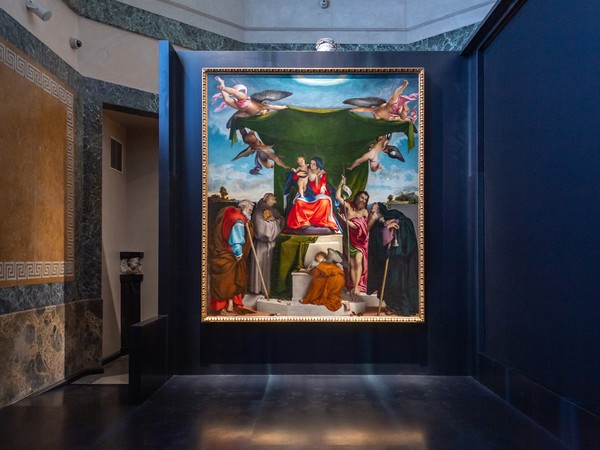Florence and Europe. Eighteenth -century art on the UffiziSet -Up | Extentliness Uffizi
Now are 150 masterpieces that tell the eighteenth century, works by Goya, Tiepolo, Canaletto, Le Bruard, Liotard, Mengs, just to name a few masters, show themselves to visitors to the Uffizi galleries.
A great exhibition entitled “Florence and Europe. Art from the eighteenth century to the Uffizi”Compiled by director Simone Verde and the head of the painting of the eighteenth -century Alessandra Griffo, brings back to the Uffizi the most talented brushes of the century of the lights. From today, May 28, until 28 November, the Fresco rooms on the ground floor of the museum will reveal an accurate selection of masterpieces, including paintings and sculptures, furniture, porcelain, prints and a large carpet, many exhibited for the first time in the gallery, others no longer visible for ten years.
‘Florence and Europe – Explains the director of the Uffizi Galleries Simone Verde – has the goal of extending an extremely versatile century by intertwining his aesthetic culture, the general narrative of the context to the pregnancy of the Uffizi as the first modern European museum. A complex story full of subtests and shades that we have built with patience and dedication that make available to the public works of the collection that have not been seen or never exposed for many years. “
Florence and Europe. Eighteenth -century art in the Uffizi, Set -Up | Extentliness Uffizi
The aim of exposure is to tell an era of crucial changes for thinking, aesthetics, Western taste, and also for the same Uffizi who changed its face in the eighteenth century to transform themselves from a dynastic box of real collections into the first modern museum in the world.
The pact founded by the last descendant of the doctors, Anna Maria Luisa had bound the endless deposition of works in Florence “because of a ornament of the state”. It was Pietro Leopoldo, Grand Duke of Tuscany, on 24 June 1769, on the day of the festival of the patron saint of Florence, to freely visit the museum citizens.
Because of these structural changes that are interwoven with the great wave of change in politics, culture and aesthetics throughout Europe, the Grand Dukes manage to transform the city and the museum into a microcosmos that vibrates the new wind of the continent.
“The Works to Ship – says the curator of the eighteenth -century painting of the Uffizi Galleries Alessandra Griffo – in addition to being great quality, have the advantage that I offer ideas to get to know a crucial century for the formation of mentality, sensitivity and even modern taste. Today in the year, withdrawn;”
Opening the path is artistic production at the time of the last doctors, in the first decades of the eighteenth century. The committees entrusted to great masters such as Giovan Battista Foggini or Sebastiano Ricci show that religiosity still plays a dominant role in a still feudal company during this period. Great artistic means were also invested in the celebration of the departing dynasty, rejected in the portraits of Cosimo III, of the great Prince Ferdinando and Gian Gastone. The latter falls on the interpretation of Joan Richter, typical Ancien regime, inspired by the pompous portraits of the French court. Their successors, the Lorena, watch over the route immortal in Marble Bustes, while the less ‘official’ portraits, the work of masters such as Goya, Elisabeth Vigée le Brun, Anton Rafael Mengs and Jean Marc Nattier, witnesses to the expansion of the audience of models and clients, those that place, those who are those that place, those who are those who, those that place, those that place, those who have been the place in place, those that place, those who were those places, those that place, those who have been the place in place, those who have been the place in place, those that place, those who were those places, those who were those place, those who have been the place in the place in the place in this century and those that place.
The interest in new pictorial schools, represented in a whole section of the exhibition, is reflected in the exposed paintings, representative of what schools produced throughout Italy. There is the Tuscan school and there are the Venetian schools, Emilian, with prominent names such as Giovanni Domenico Ferretti, Giuseppe Maria Crespi, Canaletto, Francesco Guardi. Under the sketches, the work of 1701 distinguishes from 1701 by Anton Domenico Gabbiani dedicated to the dome of the Florentine church of San Frediano in Cestello, with the glory of Santa Maria Maddalena who brought to heaven through the angels.

Florence and Europe. Eighteenth -century art in the Uffizi, Set -Up | Extentliness Uffizi
The culture of time rediscovers the primitives, the painters of medieval Christianity evaluated themselves in the anti-illuminist environments that prepare romance, and still the fashion of the exotic, expressed in paintings such as the Young woman dressed in Turkish from Jean-étienne Liotard or Portrait of the Emperor of China Kangxi By Giovanni Gherardini.
Under the news of the exhibition, the “live” restoration site of the Mystical wedding from Santa Caterina de ‘Ricci By Pierre Subleyras, recent acquisition of the Uffizi Galleries. The painting, a masterpiece of the eighteenth century, which needs an accurate cleaning intervention, will in fact be ‘edited’ under the eyes of the audience during the visit.
The naked and erotic sculptures, artistic category that lived great moments of happiness in the eighteenth century, are moving forward in the selection that follows the composition of the imaginary erotic cabinet that the Marquis described in his novel “Juliette” at the end of the eighteenth century. An effective synthesis of the carnal temptation that the classic marbles exercised about the imagination of his contemporaries. According to the lecture, these works, now collected in a room, printed by the Marquis, the Virile Love (The Foul Leonino), the love against nature (the Hermafrodite) and the incestuous love (the group Caligola and Drusilla).
The budding aesthetic category of the sublime explodes instead in another room where the typical sense of surprise and dismay is rejected in iconographies of ruins, waterfalls, snowy peaks. Images that will evolve there for a few years in the most complete form of romance.
The works related to the Grand Tour, including two views of Venice of Canaletto, a spectacular vision of Vesuvius when Thomas Patch and Theme -Souvenirs are closing the route.
#Uffizi #Modern #Museum #Europe #exhibition #tells #art #eighteenth #century #Florence #Florence #Arte.it





